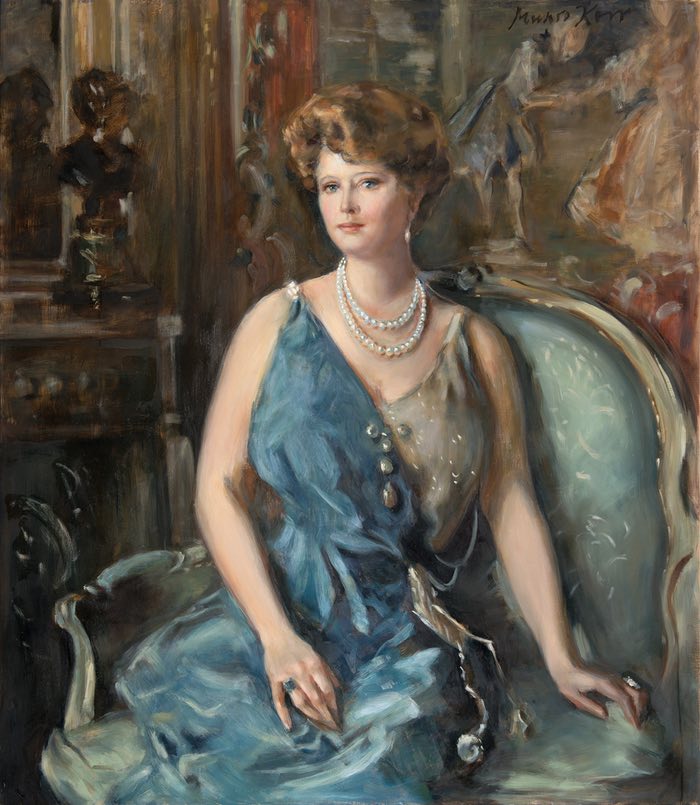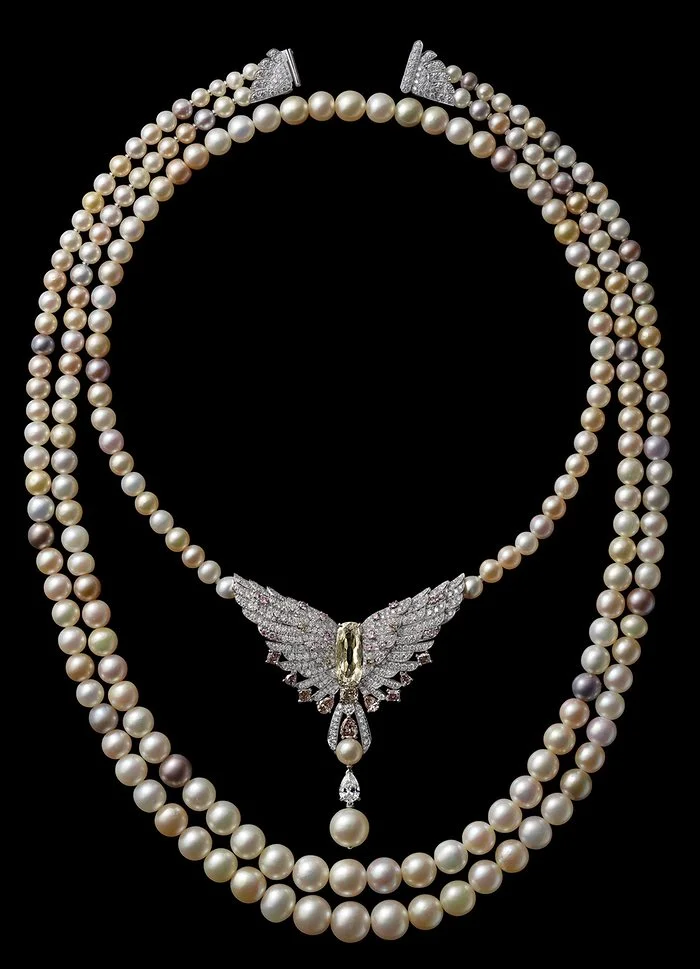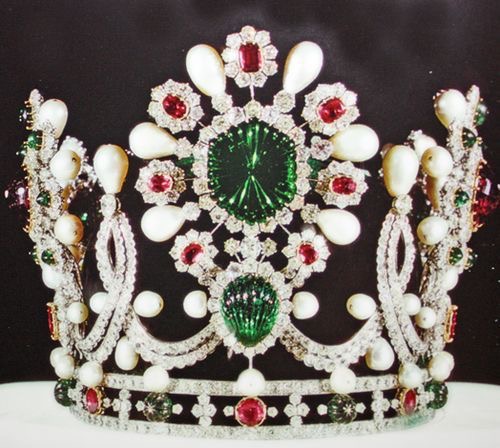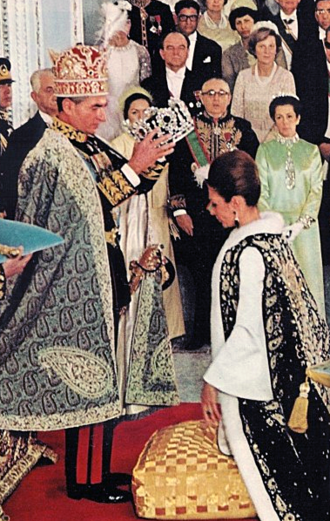The Pearls that Built Cartier
/Pierre Cartier 1910
By 1912 Pierre Cartier had established himself among the elite of New York through the buying and selling of some of the world's most awe inspiring gems, including the 45.52 carat Hope Diamond. But Pierre was not satisfied with his New York salon. He wanted more for Cartier. He wanted a grander building that could both be a beacon for the city's elite and be on par with Rue de la Paix, the store's flagship in Paris. Then one day fate stepped in and offered Cartier an opportunity in the form of a 5th avenue mansion, a multimillionaire's wife and a double strand of pearls.
The Plants
The original owner of the 5th avenue mansion that this story revolves around was an American businessman named Morton F. Plant. Morton was the son of Henry Bradley Plant, who had built an enormous railroad and steamship network across the South that came to be known as the Plant System. He was not, however, well loved by his father. Even though Morton had been working as the president of his father's company Henry had, in a cold move, attempted to cut Morton completely out of his will and leave his fortune to his grandson. Morton and Henry's wife contested the will and eventually won back the fortune that Henry had attempted to deny them.
Morton went on to capitalize on his father's existing business and continued to grow it further. In 1887 Morton married his first wife Nellie, but she died in 1913, at the age of 50. In 1914, ten months after his first wife's death 61 year old Morton married 31 year old Mae Caldwell Manwaring (or Maisie, as she was nicknamed). Maisie was married to a hotel owner named Selden Manwaring at the time she and Plant met and engaged in a whirlwind romance. Some stories surrounding the couple's courtship state that Morton Plant was so head over heels for Maisie that he paid Selden Manwaring $8 million for an uncontested divorce!
After their marriage Morton moved Maisie into his 5th avenue mansion in New York City. The Morton Plant House was part of a group of mansions built on Fifth Avenue, known as "Millionaire's Row", that were home to the Vanderbilts, the Astors, and other notable wealthy New Yorkers; however, at the time that Maisie was moving in, homes like the Plant's opulent six story Italian Renaissance style home with limestone and marble accents (like the others of Millionaire's Row) were a dying breed. For a number of years commercial progress had been changing the face of the area. Hotels such as the Waldorf and the Astoria had led the change a number of years earlier, and now storefronts were moving in across from the stately homes.
Cartier
Claudia Munro Kerr's interpretation of a portrait of Maisie, originally painted by the portraitist Alphonse Jungers
Pierre Cartier arrived in New York in 1909. The French jeweler's first residence in New York was 712 Fifth Avenue. He established the Cartier boutique in this area of New York City as a direct response to rival jeweler Dreicer, who was located at 560 Fifth Avenue. Dreicer was creating and selling knocking off Cartier designs because he could create them faster than authentic pieces could be imported from Paris so it was imperative to Pierre that he establish workshops in New York, with his own workforce. By cutting delivery time and through his highly publicized acquisition and sale of rare gems (such as the Hope Diamond) Pierre was able to further push Cartier into the spotlight and the business's profile continued to rise among the elite of New York.
The Necklace
Meanwhile the Plants had begun construction on a new larger home on 86th and 5th avenue. By 1917 many of the families that had called Millionaire's Row home had left for new residences to the north and the businesses that had been seeking centralized locations continued their encroachment into the neighborhood. It was around this time that Maisie Plant fell head over heels for a natural pearl necklace in Pierre's New York City salon. The necklace was a double strand of natural South Sea pearls. The smaller strand consisted of 55 pearls and the larger, of 73. The 128 pearls that made up the necklace had taken years to assemble. Each one having been collected by hand by a diver. The pearls were then matched in color and size to create perfect graduated strands. Because of the rarity of natural pearls (cultured pearls had not yet reached the commercial markets) were a symbol of wealth and status among New York's social elite. Pierre sensed an opportunity and proposed a trade.
Mrs. Plant wanted the pearls, and Pierre wanted the prestigious address so a deal was made. 'The Real Estate Record And Guide' reported on the transaction in its July 21, 1917 issue (the pearls would have been the "other valuable considerations"):
The 5th avenue Mansion in 1920
"The Morton F. Plant dwelling at the southeast corner of Fifth avenue and 52nd street, has been sold to Louis J. Cartier, of Paris, and Pierre C. Cartier, of New York, jewelers, who several months ago leased the property for their business. Ownership was transferred last Saturday for $100 and other valuable considerations. The option to purchase was given to the tenants in their lease, and they have availed themselves of this opportunity. The dwelling is being altered for trade purposes and will soon be ready for occupancy by the firm, which is now located in upper Fifth avenue. The Plant dwelling is one of the best known on Fifth avenue; it is opposite to the Vanderbilt houses, and helps to serve as a barrier to the northward movement of trade on Fifth avenue. Mr. Plant was approached many times with offers to sell or lease his house, but would not consider any proposition until several months ago, when he decided that his stand against the trade was useless."
According to the New York Times the necklace was valued at $1 million and the building was valued at $925,000.
Morton passed away on November 4, 1918 (less than a year and a half after the mansion sale) leaving his wife Maisie his fortune. Maisie married twice more, before passing away at the age of 75 in July of 1957.
The auction of her estate, was reported in Time magazine's "At The End Of An Avenue."
"This week her Manhattan house, the last of the fabulous Fifth Avenue mansions to be fully occupied, will go on the block. Just to tabulate her possessions, the Manhattan auction house, Parke-Bernet, has published a 313-page illustrated catalogue. Sale of the 1021 listed items will take two weeks, and is expected to bring over $1,000,000, not counting the 167 lots of jewelry. Among the jewels are two of the most famous Oriental pearl necklaces ever assembled, a strand of 55 and another of 73 matched and graduated pearls, which in 1916 Mrs. Rovensky (then Mrs. Plant) received from her multimillionaire husband. Commodore Plant had taken them as payment of $1,000,000 for their house at 52nd Street and Fifth Avenue."
Maisie Plant Salon, Cartier Mansion, 2016
The pearl strands sold for a paltry $181,000. Pearl sales had in fact dropped markedly not long after the Plants completed the trade. This was due to the introduction of cultured pearls by Kokichi Mikimoto. The Plant's palatial house on East 86th Street was torn down in 1960, and replaced by an apartment building. The only remnants of the home that remain are marble columns and a marble fountain.
The Cartier Mansion's story has a somewhat happier ending. As part of the deal Pierre agreed that he would not alter the exterior of the building in any way. Interestingly even after the mansion's conversion to a commercial entity the interior was also mostly untouched until the renovation in the 2000's. The building has since undergone two refurbishments, one in 2000-2001 and another in 2016. The building currently has landmark status in New York City.
As for the famous pearls, after the were sold at auction they were never seen again.
Cartier pearl necklace, 2016, created to celebrate the re-opening of the 653 Fifth Avenue Mansion.
























